- Release Date:
Numbers in the Japanese language
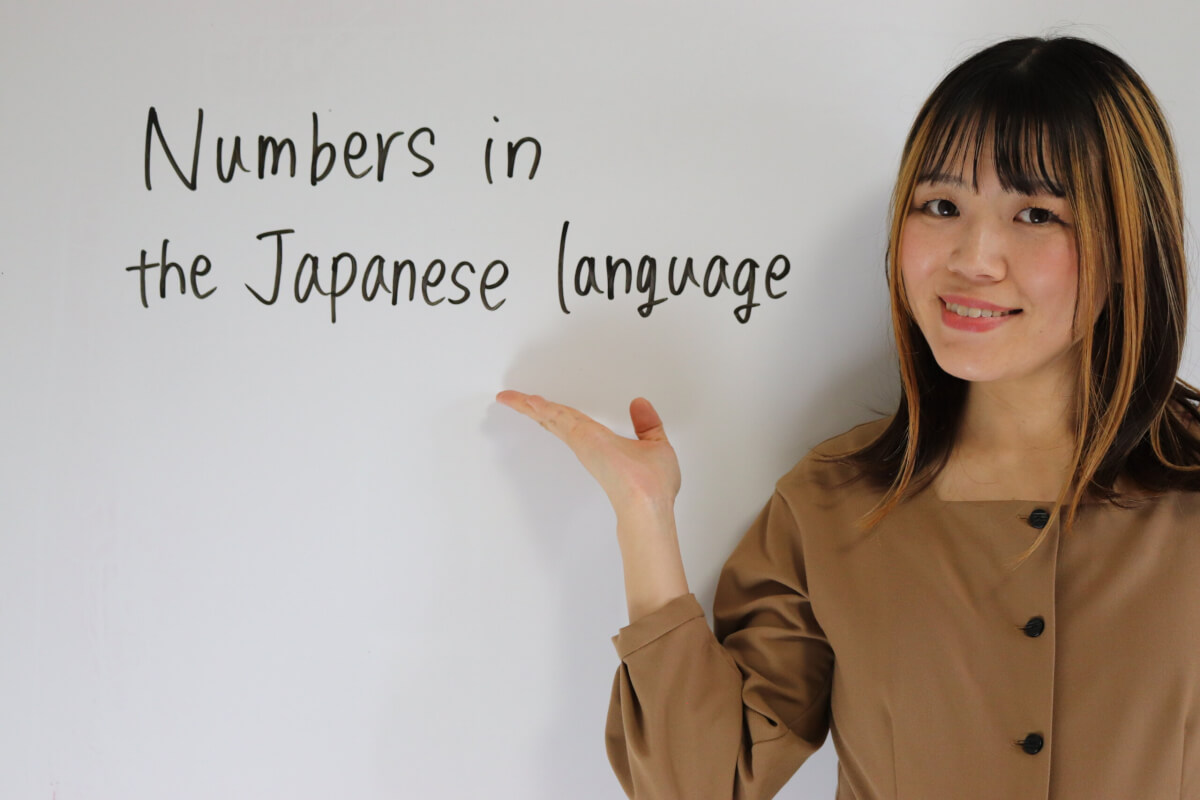
Have you studied Hiragana and Katakana in Japanese? Let's study how to say numbers in Japanese together. You'll be able to say your age and today's date after reading this article.
How to say numbers in Japanese
The Japanese alphabet includes Hiragana, Katakana, and Kanji. Let's first learn how to use them differently for numbers.
Hiragana, Katakana
This is a way of saying numbers using Hiragana and Katakana. They are used to learn how to read numbers in Japanese.
Here is how to say numbers from 0 to 10.
| Numbers | Hiragana | Katakana |
|---|---|---|
| 0 | ぜろ | ゼロ |
| 1 | いち | イチ |
| 2 | に | ニ |
| 3 | さん | サン |
| 4 | よん/し | ヨン/シ |
| 5 | ご | ゴ |
| 6 | ろく | ロク |
| 7 | なな/しち | ナナ/シチ |
| 8 | はち | ハチ |
| 9 | きゅう | キュウ |
| 10 | じゅう | ジュウ |
How should we use Hiragana and Katakana for numbers?
Hiragana and katakana are emphatic ways of saying words that include numbers.
Katakana tends to be used more often than Hiragana. For example, signs often say “No.1 product!” may be written as “イチバンの商品!/ichiban no shouhin/". This "イチバン" emphasizes “No. 1.
Hiragana indicates the reading of the numbers. Just as we use Hiragana to read Kanji when learning Japanese, we use Hiragana to read numbers.
Kanji
Numbers are represented by kanji characters too. Here are the numbers in Kanji, from 0 to 10.
| Numbers | Kanji |
|---|---|
| 0 | 零 or 〇 |
| 1 | 一 |
| 2 | 二 |
| 3 | 三 |
| 4 | 四 |
| 5 | 五 |
| 6 | 六 |
| 7 | 七 |
| 8 | 八 |
| 9 | 九 |
| 10 | 十 |
How should we use Kanji for numbers?
Why do Kanji numbers exist when numbers can be represented by characters such as 0, 1, 2, 3?
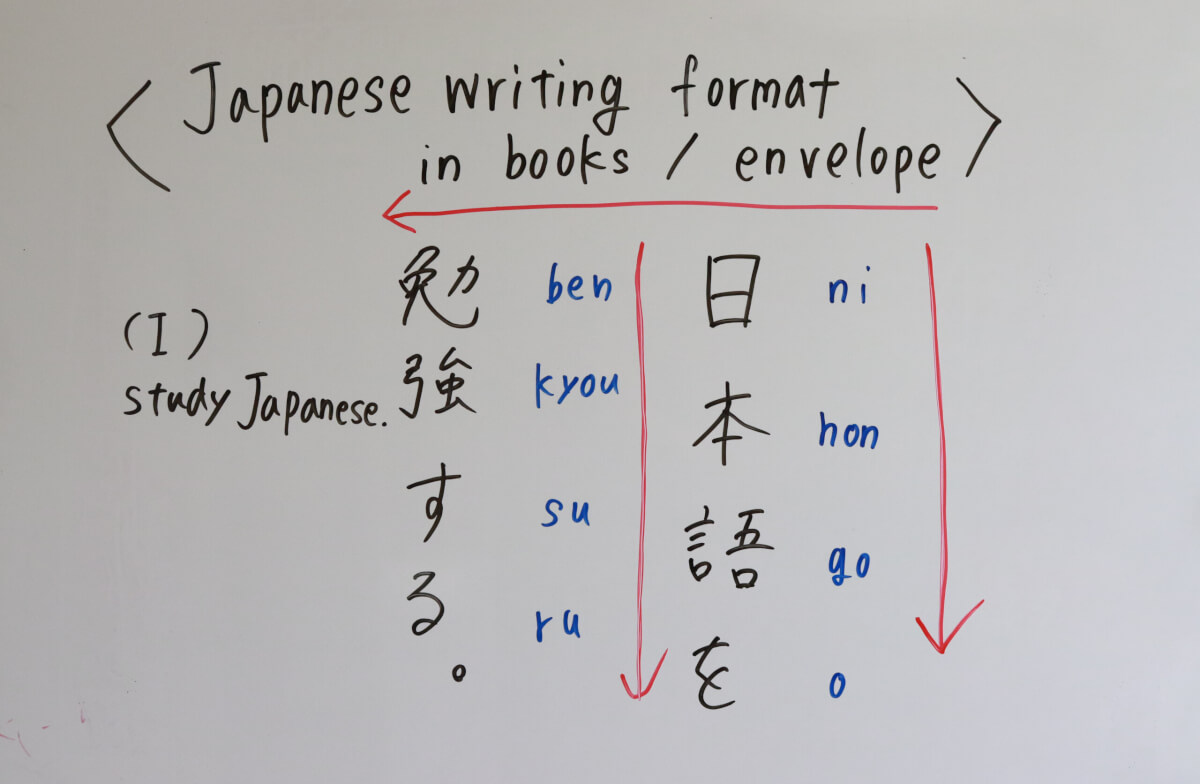
It is because of the way Japanese writing system. Japanese sentences are written vertically in books or addresses on envelopes. When Arabic numbers are written vertically, they are very difficult to read, but if you use Japanese Kanji numbers, you will find that they are easier to read.
Kanji is also used for addresses on phone numbers.
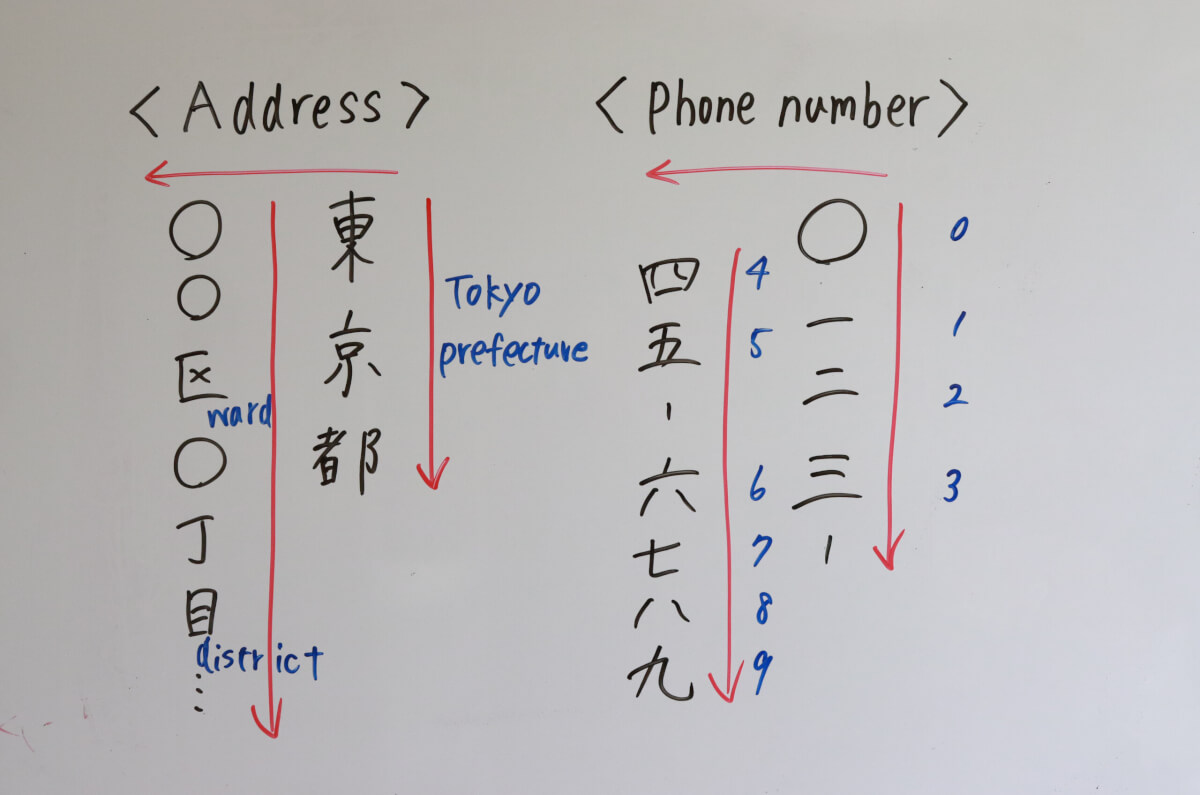
In contrast, Arabic numbers are often used for documents written horizontally.
However, idioms using Kanji numbers, e.g. “一番 /ichi ban/ No. 1”, “一塁 /ich irui/ first base”, or “一期一会 /ichi go ichi e/ once-in-a-lifetime meeting”, should be written in Kanji instead of using Arabic numbers.
Must know numbers with counters
There is a word called "counter" which is used to count things in Japanese.
For example, an apple is written as "1 apple" in English, but we rarely use only “1” to indicate the number of something in Japanese such as “one apple”.
There are about 500 such counters. That's too many, however, Japanese people cannot say all of them. That's like Japanese people don't know all of Kanji. Japanese learners should aim to learn 10 of them first.
We will show you how to say “counter” for date, for age, and for small things here.
Examples 1. Nichi for Days & gatsu for Months
First, let's say in Japanese what day it is today.
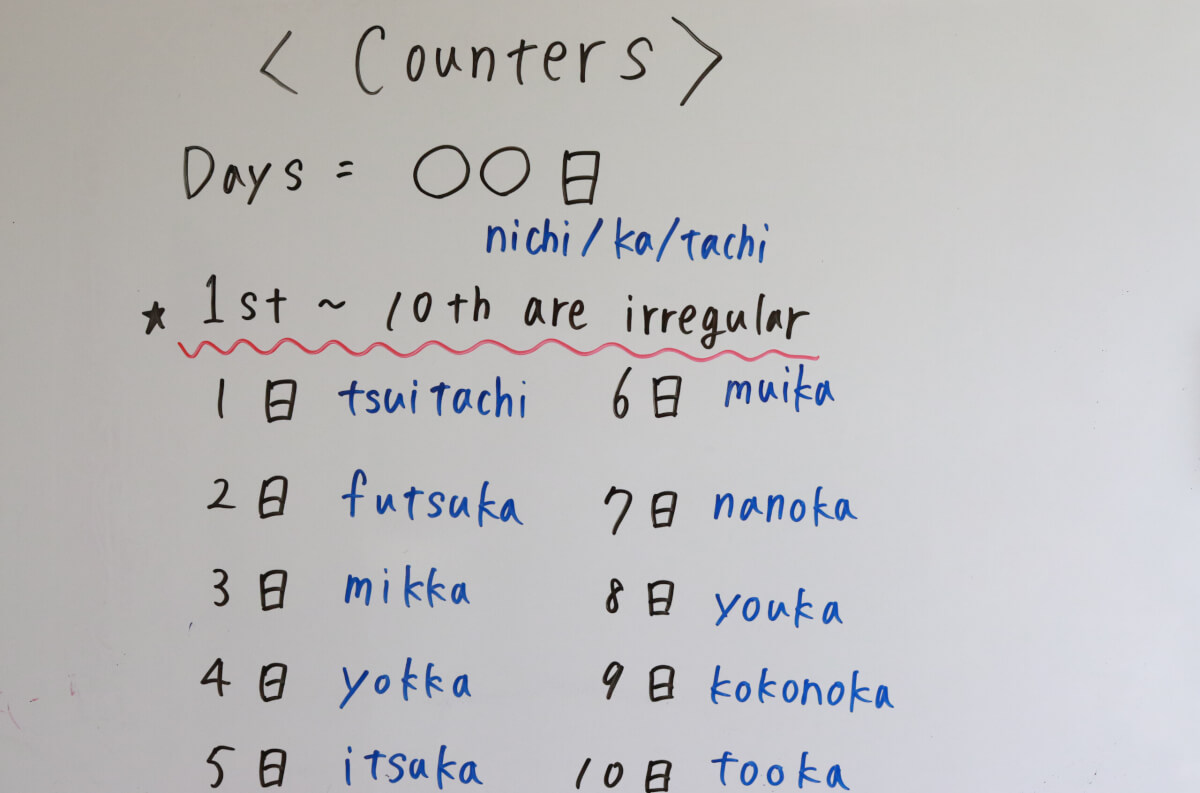
Days
| Date | Kanji | Hiragana |
|---|---|---|
| 1st | 一日/1日 | ついたち |
| 2nd | 二日/2日 | ふつか |
| 3rd | 三日/3日 | みっか |
| 4th | 四日/4日 | よっか |
| 5th | 五日/5日 | いつか |
| 6th | 六日/6日 | むいか |
| 7th | 七日/7日 | なのか |
| 8th | 八日/8日 | ようか |
| 9th | 九日/9日 | ここのか |
| 10th | 十日/10日 | とおか |
| 11th | 十一日/11日 | じゅういちにち |
| 12th | 十二日/12日 | じゅうににち |
| 13th | 十三日/13日 | じゅうさんにち |
| 14th | 十四日/14日 | じゅうよっか/じゅうよんにち |
| 15th | 十五日/15日 | じゅうごにち |
| 16th | 十六日/16日 | じゅうろくにち |
| 17th | 十七日/17日 | じゅうななにち/じゅうしちにち |
| 18th | 十八日/18日 | じゅうはちにち |
| 19th | 十九日/19日 | じゅうくにち |
| 20th | 二十日/20日 | はつか |
| 21st | 二十一日/21日 | にじゅういちにち |
| 22nd | 二十二日/22日 | にじゅうににち |
| 23rd | 二十三日/23日 | にじゅうさんにち |
| 24th | 二十四日/24日 | にじゅうよっか/にじゅうよんにち |
| 25th | 二十五日/25日 | にじゅうごにち |
| 26th | 二十六日/26日 | にじゅうろくにち |
| 27th | 二十七日/27日 | にじゅうななにち/にじゅうしちにち |
| 28th | 二十八日/28日 | にじゅうはちにち |
| 29th | 二十九日/29日 | にじゅうくにち |
| 30th | 三十日/30日 | さんじゅうにち |
| 31st | 三十一日/31日 | さんじゅういちにち |
Kanji numbers are used for vertical writing, and Arabic numbers are used for horizontal writing.
Months
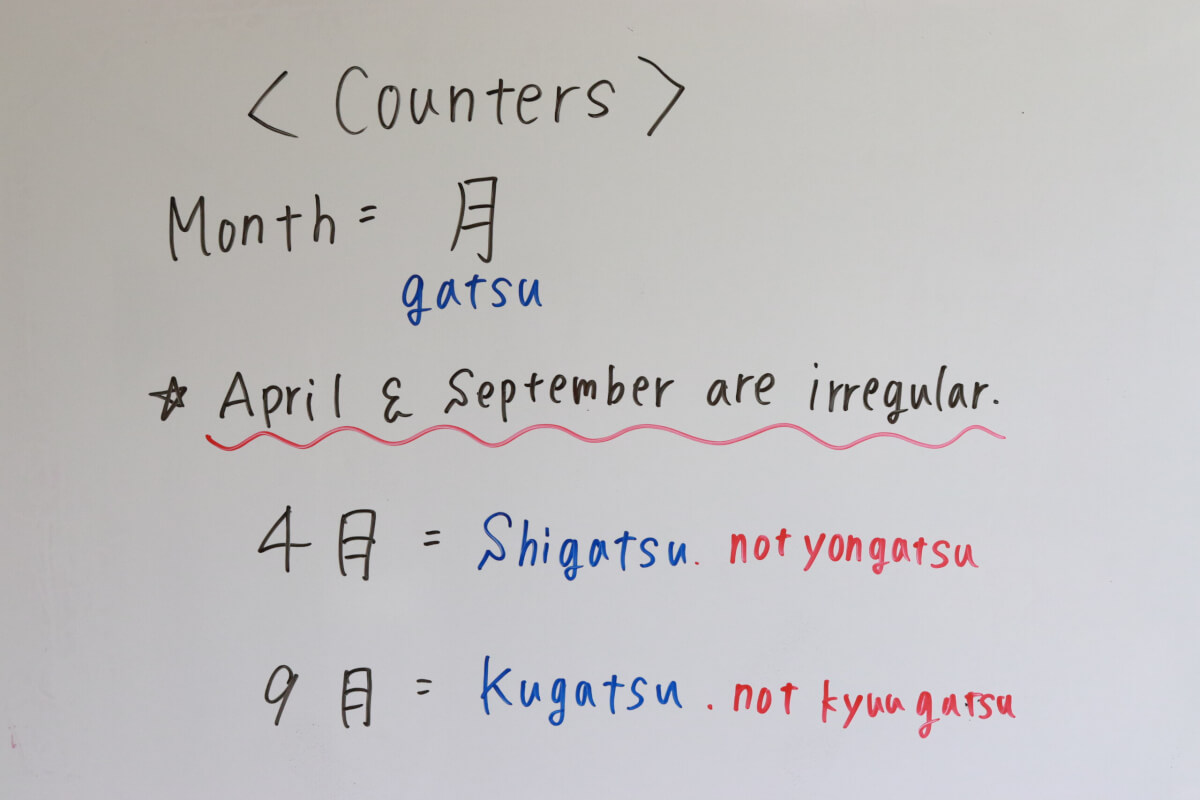
| Months | Kanji | Hiragana |
|---|---|---|
| January | 一月/1月 | いちがつ |
| February | 二月/2月 | にがつ |
| March | 三月/3月 | さんがつ |
| April | 四月/4月 | しがつ |
| May | 五月/5月 | ごがつ |
| June | 六月/6月 | ろくがつ |
| July | 七月/7月 | しちがつ/なながつ |
| August | 八月/8月 | はちがつ |
| September | 九月/9月 | くがつ |
| October | 十月/10月 | じゅうがつ |
| November | 十一月/11月 | じゅういちがつ |
| December | 十二月/12月 | じゅうにがつ |
Examples 2. Sai for ages
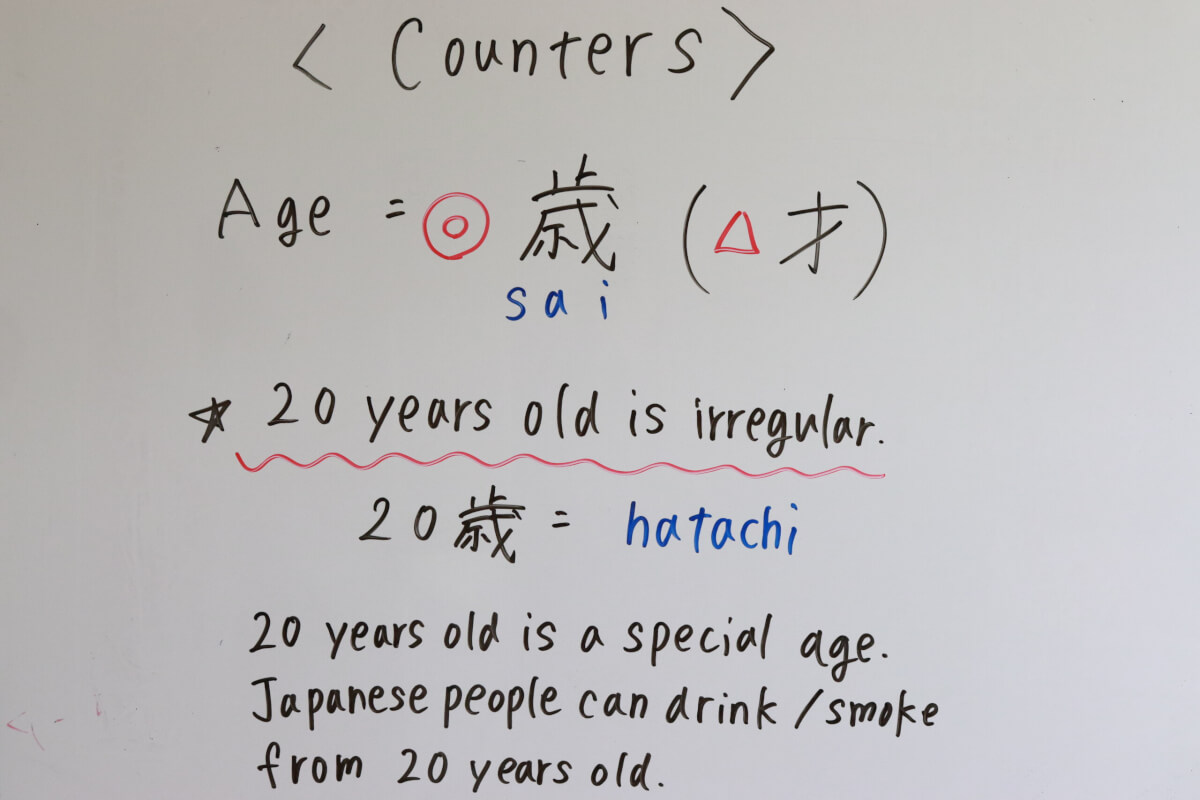
When we say our age, we use “歳/sai/years old” after the number. There is a simple Kanji for “才/sai/years old”, but for those of you who are learning Japanese now, remember it as “歳” because "才" is easier to learn for elementary school students in Japan before they learn ‘歳’.
| Ages | Kanji | Hiragana |
|---|---|---|
| 1 year old | 1歳 | いっさい |
| 2 years old | 2歳 | にさい |
| 3 years old | 3歳 | さんさい |
| 4 years old | 4歳 | よんさい |
| 5 years old | 5歳 | ごさい |
| 6 years old | 6歳 | ろくさい |
| 7 years old | 7歳 | ななさい |
| 8 years old | 8歳 | はっさい |
| 9 years old | 9歳 | きゅうさい |
| 10 years old | 10歳 | じゅっさい |
| 20 years old | 20歳 | にじゅっさい |
| 30 years old | 30歳 | さんじゅっさい |
| 40 years old | 40歳 | よんじゅっさい |
| 50 years old | 50歳 | ごじゅっさい |
| 60 years old | 60歳 | ろくじゅっさい |
| 70 years old | 70歳 | ななじゅっさい |
| 80 years old | 80歳 | はちじゅっさい |
| 90 years old | 90歳 | きゅうじゅっさい |
| 100 years old | 100歳 | ひゃくさい |
Examples 3. Ko & Tsu for small things
The “個 /ko/” and “つ /tsu/” are very similar. Both can be used to count small things.
Actually, “つ” is the more useful counter of the two. If you cannot remember many counters, you can still use “つ” to communicate. It is such a convenient word. Tsu” is used both conceptually and generically.
The “個 /ko/” is often used to count more material things. For example, an apple for food, an eraser for something on your desk, or a rock outside.
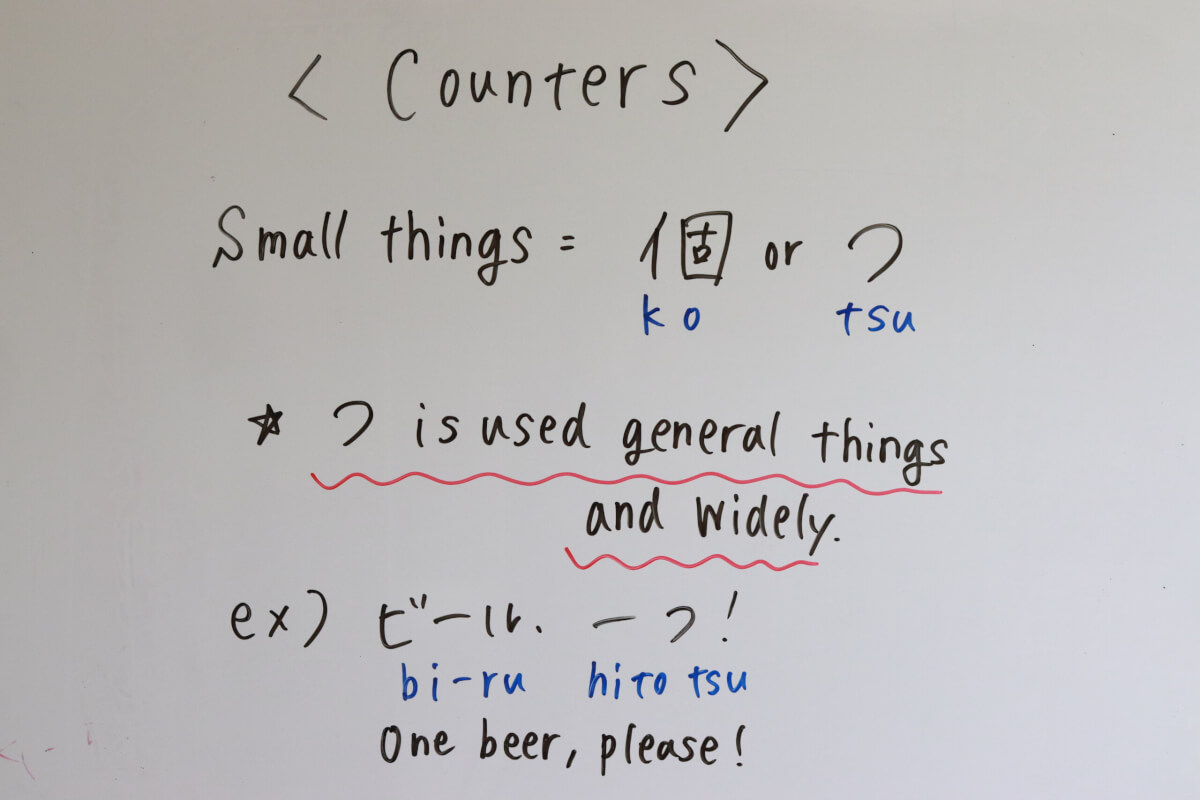
Let's learn how to read it.
Ko
| Things | Kanji | Hiragana |
|---|---|---|
| 1(e.g. 1 apple) | 1個 | いっこ |
| 2 | 2個 | にこ |
| 3 | 3個 | さんこ |
| 4 | 4個 | よんこ |
| 5 | 5個 | ごこ |
| 6 | 6個 | ろっこ |
| 7 | 7個 | ななこ |
| 8 | 8個 | はちこ/はっこ |
| 9 | 9個 | きゅうこ |
| 10 | 10個 | じゅっこ |
Tsu
| Things | Hiragana | How to read |
|---|---|---|
| 1(e.g. 1 apple) | 1つ | ひとつ |
| 2 | 2つ | ふたつ |
| 3 | 3つ | みっつ |
| 4 | 4つ | よっつ |
| 5 | 5つ | いつつ |
| 6 | 6つ | むっつ |
| 7 | 7つ | ななつ |
| 8 | 8つ | やっつ |
| 9 | 9つ | ここのつ |
Japanese people don't say 10(too) anymore. つ is for 1 to 9.
